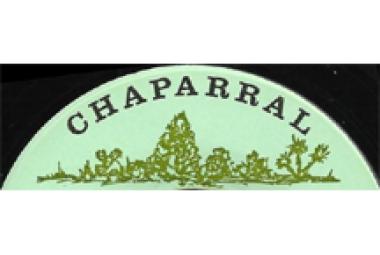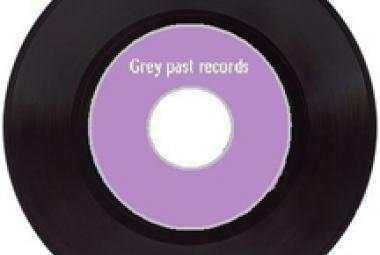Jack Bruce (born John Symon Asher Bruce; 14 May 1943 – 25 October 2014) was a Scottish musician, singer and songwriter known primarily for his contributions to the British supergroup Cream, which also included guitarist-singer Eric Clapton and drummer Ginger Baker. In March 2011 Rolling Stone readers selected him as the eighth greatest bass guitarist of all time. Bruce maintained a solo career that spanned several decades and also played in several musical groups. Although recognized first and foremost as a vocalist, bassist and songwriter, he also played double bass, harmonica, piano, cello and guitar. He was trained as a classical cellist and considered himself a jazz musician, although much of his catalogue of compositions and recordings tended toward rock and blues. (More from Wikipedia)
Eric Clapton joined John Mayall & the Bluesbreakers after leaving the Yardbirds in order to concentrate on the blues; he was in the band from April to August 1965, and from November 1965 to July 1966. John Mayall’s band was a revolving door of famous British musicians; but even more remarkably, bandmembers who left John Mayall & the Bluesbreakers often helped form other rock bands. Examples include Jack Bruce, later a member of Cream with Clapton.
* * *
Jack Bruce was the original bass guitarist for Blues Incorporated, which was founded by Cyril Davies and Alexis Korner as the first amplified R&B band in Britain; other bandmembers in the early line-up include Charlie Watts, the drummer for the Rolling Stones, and vocalist Long John Baldry. The band was never intended to have a fixed line-up and included numerous fine musicians over its life, among them the future drummer for Cream, Ginger Baker. Jack Bruce was also briefly a member of Manfred Mann.
* * *
During the 1950’s, Ginger Baker was a member of several of what were known in England as “trad jazz” bands, i.e., Dixieland jazz. Charlie Watts recommended Baker as the drummer for Blues Incorporated after he left the band. Ginger Baker crossed paths with lead vocalist, saxophonist and organist Graham Bond and bassist Jack Bruce; together with another alumnus of the band, saxophone player Dick Heckstall-Smith, the four began jamming together before enthusiastic crowds while performing with a band called the Johnny Burch Octet. Bond initially formed the Graham Bond Quartet with Bruce, Baker and guitarist John McLaughlin (an important figure in jazz fusion who performed on Miles Davis’s first gold record, Bitches Brew); when Heckstall-Smith joined up, the group was renamed the Graham Bond Organisation. It was in this period that Ginger Baker developed his signature drum solo, “Toad”.
* * *
To some extent at least, the formation of Cream grew out of an English all-star band called the Powerhouse that was assembled solely to provide music for a 1966 compilation album called What’s Shakin’ that announced the arrival of Elektra Records in Great Britain. Bandmembers included Eric Clapton (guitar); Jack Bruce (bass guitar) and Paul Jones (harmonica) from Manfred Mann; Stevie Winwood (lead vocals) and Pete York (drums) from the Spencer Davis Group; and Ben Palmer (piano), who had briefly been in a band with Clapton in 1965. Ginger Baker was originally slated to be the drummer for the group but was unavailable. This remarkable line-up included two members of Cream (and almost all three), plus two future members of Blind Faith (Clapton and Winwood). What’s more, Cream later recorded two of the only three songs ever made by this assemblage, Robert Johnson’s “Crossroads” and an instrumental called “Steppin’ Out” that Eric Clapton had previously performed while in John Mayall & the Bluesbreakers. The artist on these two songs was listed as Eric Clapton & the Powerhouse. The third song, “I Want to Know” was credited to MacLeod, an evident reference to Paul Jones’ wife Sheila MacLeod; Ten Years After included “I Want to Know” on their first album, Ten Years After that was released in late 1967.
* * *
In 1966, Eric Clapton met Ginger Baker; both men felt a little stifled in their band environment – John Mayall & the Bluesbreakers and the Graham Bond Organisation, respectively – and Baker asked Clapton to join a band that he was putting together. Clapton agreed, but only if Jack Bruce was also included as the lead vocalist and bass guitarist; Clapton later said that Baker almost wrecked his car when he heard that. Jack Bruce and Ginger Baker were notorious for their volatility while in the Graham Bond Organisation together, including on-stage fights and sabotage of the other’s instruments. The two put aside their differences for the sake of the new band, but this probably sowed the seeds for Cream’s dissolution in barely two years’ time.
* * *
The band’s debut album, the fittingly titled Fresh Cream featured a mixture of traditional blues songs as well as band originals. For a band that became renowned for their instrumental solos, the two opening tracks (both written or co-written by Jack Bruce), “I Feel Free” and “N.S.U.” were less than 3 minutes each. “I Feel Free” was co-written with Pete Brown, who became an important songwriting partner with the Cream bandmembers; he and Bruce were the songwriters on their hit “White Room” plus four songs on Disraeli Gears that included “Sunshine of Your Love” (which was co-written with Eric Clapton). The blues songs include Skip James’ “I’m So Glad”, “Rollin’ and Tumblin’” (originally written and recorded by Hambone Willie Newbern, with the first famous recording being by Muddy Waters), and the stomping “Spoonful” (written by Willie Dixon).
* * *
Blind Faith formed shortly after the break-up of Cream. Eric Clapton had been trying to bring Stevie Winwood into Cream to act as a sort of buffer between Jack Bruce and Ginger Baker – actually that probably wouldn’t have worked out, since I heard that Baker and Winwood didn’t get along in Blind Faith. As with the formation of Cream itself, Eric Clapton and Stevie Winwood were frustrated with their present bands. Cream had better amplifiers toward the end, and Jack Bruce was pushing the volume up during concerts, so Ginger Baker was having difficulty getting his drums heard above the roar. Eric Clapton said that he stopped playing during a Cream concert once, and neither Jack Bruce nor Ginger Baker even noticed; he also characterized later Cream performances as the bandmembers showing off.
* * *
After Mountain, the solo album by Leslie West was released, the group then went on the road using the band name Mountain, bringing along Steve Knight on keyboards after Norman Landsberg and Ken Janick left to start the band Hammer. Their fourth concert as a working band was at the 1969 Woodstock festival; though they were not included on the first album or the concert film, their performances of “Blood of the Sun” (from the Leslie West solo album, Mountain) and “Theme for an Imaginary Western” (written by Jack Bruce and Pete Brown) were included on the double album Woodstock 2 that came out in 1971.
* * *
The other member of Cream, Jack Bruce released his debut solo album, Songs for a Tailor in the U.K. at almost the same moment that Mountain was performing one of the songs on the album, “Theme for an Imaginary Western” at Woodstock. All of the songs on the album had music by Jack Bruce and lyrics by Pete Brown; they had co-written several of the Cream songs previously.
Jack Bruce has released many albums since then; the one that I have is an anthology album called At His Best.
* * *
Jack Bruce has rarely performed with a band since Cream; but after Mountain broke up in 1969 when Felix Pappalardi left the group, he hooked up with two of the members of the group, Leslie West and Corky Laing and formed a power trio called West, Bruce and Laing. The group released two studio albums, Why Dontcha and Whatever Turns You On; no hits emerged from the albums, and by the time their live album, Live ’n’ Kickin’ came out in 1974, the group had already broken up.
(May 2014)















